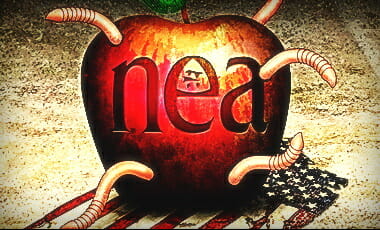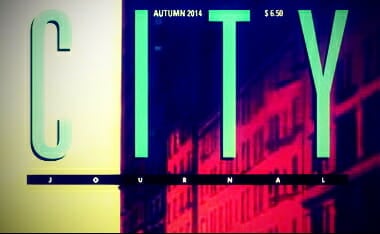…The UFT has been especially effective because, unlike other interest groups in the city, it gets two bites at the apple—through collective bargaining and through politics. Three structural features of the collective bargaining process skew in the UFT’s favor. First, even in the best-case scenario, in which the city fights for the children’s interests and the union battles to protect its teachers, the result would be something in between—that is, an outcome not fully in the interest of students. Second, the city is a near-monopoly provider of education. Absence of competition reduces pressure on the city to drive a hard bargain with the UFT, while lessening incentives for the union to moderate its demands. Third, the UFT contributes cash and campaign assistance to the politicians with whom it negotiates. To the extent that the UFT backs winners, the union ends up on both sides of the bargaining table. Consequently, negotiated outcomes favor the UFT over time.The United Teachers Federation (UFT) represent most of New York’s public schools, so you understand the acronym below:
In the political arena, no group in New York City can rival the UFT’s manpower and money. Most of its 116,000 members hold college and graduate degrees, making them more likely to be politically active. The union also collects huge sums in dues, which are automatically deducted from members’ paychecks. Each UFT member pays, on average, approximately $600 a year in union dues, bringing the union’s annual revenues to about $70 million—much of it reserved for paying union officials’ salaries, contributions to state and national federations, rent for office space, and the costs of collective bargaining. The UFT also maintains a Committee on Political Education, sponsored by members who voluntarily donate anywhere from 50 cents to ten dollars out of their biweekly paycheck for explicitly political purposes. The fund hauls in more than $10 million a year, about $3 million of which goes for lobbying and protests.
Thanks to its massive war chest, the UFT has become the Democratic Party’s largest underwriter in New York City and State. (It is also a major donor to the left-wing Working Families Party.) Over the last two years, the union has given $1.7 million to city council candidates—all Democrats. According to the National Institute for Money in State Politics, in 2012 (as in most years before and since), the New York State United Teachers (NYSUT), largely a state-level extension of the UFT, was the Empire State’s biggest contributor to candidates and parties in state politics. Seventy-nine percent of the NYSUT’s S1.2 million in contributions went to Democrats.
In his book Special Interest, Stanford University political scientist Terry Moe found that from 2000 to 2009, teachers’ unions’ campaign contributions exceeded those of all other business associations in New York State combined by a ratio of five to one. And most business groups don’t try to influence education policy so single-mindedly.
The UFT and the Democratic Party in New York are intertwined in other ways. For example, the union provides office space—next door to its headquarters at 50 Broadway in Manhattan—to the State Senate Democratic Campaign Committee. Then—UFT president Randi Weingarten served as cochair of Hillary Clinton’s 2000 senate campaign. Not surprisingly, during the 2008 Democratic presidential primaries, Senator Clinton dismissed the idea of teacher-merit pay as disruptive. A revolving door of consultants, campaign operatives, and lobbyists connects the UFT and the campaign staffs of state legislators and city council members. Many liberal interest groups in the city—such as Al Sharpton’s National Action Network, 1199 SEIU Healthcare Workers East, and other public-employee unions—are, for the most part, UFT allies. The union also helps fund other advocacy organizations, such as U.S. Action and the NAACP, and think tanks, such as Demos and the Economic Policy Institute, whose loyalty it can rely on in a pinch.
The UFT’s membership constitutes the largest single voting bloc in mayoral elections. And because teachers and school paraprofessionals live in all parts of the city, they can be decisive in low-turnout city council races. The UFT’s get-out-the-vote operation is rivaled only by its ally, SEIU 1199. In 2013, de Blasio was elected mayor with just 752,604 votes in a city of 8.4 million people. Fully 42 percent of voters said that they belonged to a union household.
The UFT also spends millions each year lobbying city council members and state legisla‑tors. According to the New York State Ethics Commission, the union spent $1.86 million in Albany in 2012. And the New York Public Interest Research Group reports that the NYSUT, to which the UFT contributes substantial revenues, was the state’s second-biggest lobbying spender in 2010, plunking down $4.7 million. (The Healthcare Education Project, a vehicle of SEIU 1199 and the Greater New York Hospital Association, was first.)
The UFT’s extensive political activities ensure that the school system continues to serve the needs of teachers first. The union’s enduring objectives—better pay, benefits, and job protections for its members—are divorced from issues of student achievement, as New York’s declining school performance since the unionization of teachers in the 1960s makes clear. By 1990, nearly 40 percent of freshmen entering high school had been held back in earlier grades, while 23 percent of students dropped out of school altogether. In 1994, only 44 percent of students graduated from high school in four years. Only one in three third-graders could read at or above grade level in 1997….
[….]
All this spending means that the New York City school system now lays out $20,226 per pupil — double the national average of $10,608 — based on census data released in May 2014.
Daniel DiSalvo, The Union That Devoured Education Reform, The City Journal (Autumn 2014), 12-13, 16.


